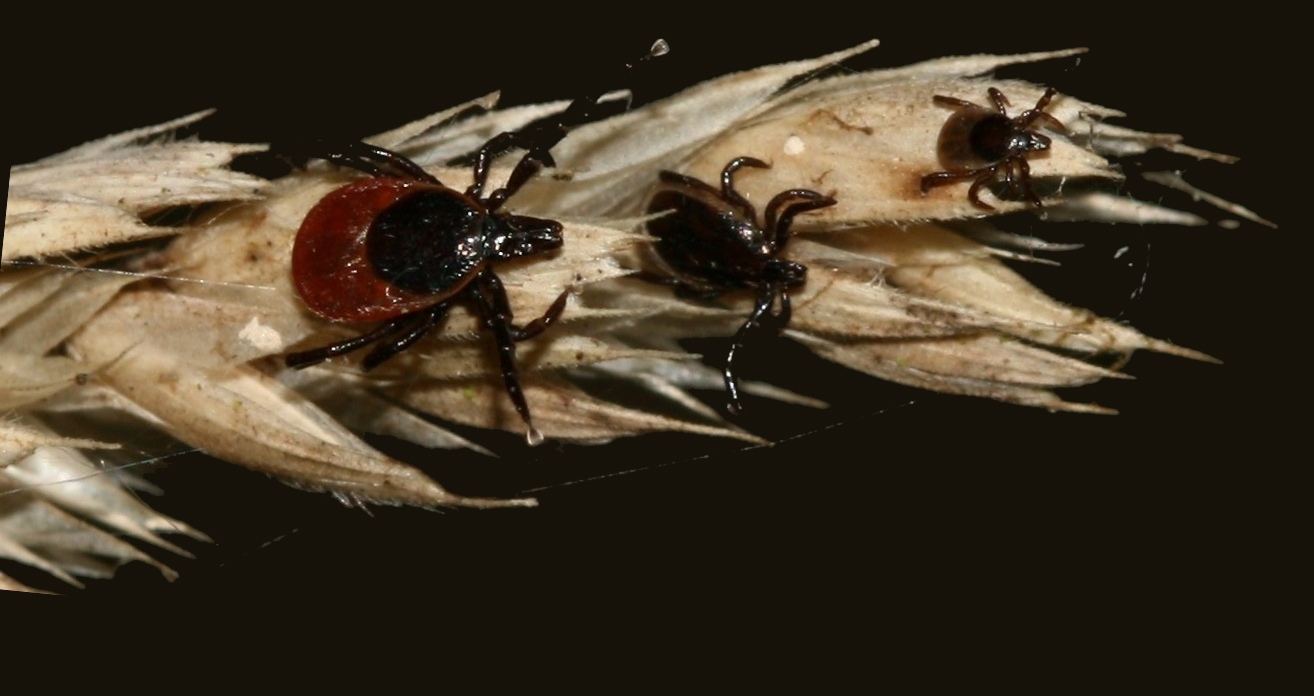This article offers information on home/yard tick control practices, enjoying nature while minimizing tick contact/disease risk, life-cycle timed prevention and links to tick-bourne disease information
The tick population today is increasing along with that of its primary hosts: rodents and deer. Few natural predators, abundant acorn harvests, and the yield of other nut bearing trees are providing deer with ideal living and breeding conditions. The problem is, of course, not in the tick and deer population numbers per se, but in the severity of the diseases they carry: Babesiosis, Rocky Mountain Spotted Fever, Lyme disease, and others.

Ticks look creepy. Just the thought of one climbing up the back of your neck is enough to make your skin crawl. Knowing, however, that these parasites are looking for their next meal, makes them look like something straight out of a Stephen King novel.
Think About Your Outdoor Space / Responsible Protection
Ticks by themselves do not move much. Their primary mode of transportation onto your yard is by deer, birds or rodents. Eliminating deer traffic by fencing can reduce ticks on your yard, but it will not stop birds from flying them in, or the wind blowing the nymphs.
Your landscape layout can impact the tick population in your yard. Ticks are much less likely to be found in an open, sunny yard. Limiting where your pets and children can go on the property can reduce their exposure to ticks. Avoid putting swing sets at the edge of the woods or near tall grass areas. Invisible fences can keep pets out of gardens, woods and other high tick locations.
Dress for Success: In the woods, or when working in the garden, wear white socks and tuck trousers into them when in grassy areas; light long-sleeved shirts are also helpful. Avoid overgrown paths and high grasses. And, remember to always check yourself, your children and pets after being in an unprotected area such as tall grass or woodlands.
Don’t Panic: If you find a tick already attached, stay calm. Even if the tick is infected with Lyme Disease for example, scientists say it takes 48 hours after it begins feeding to transmit the disease spirochetes. Pet stores and veterinarian offices have a tick removal “v-notched spoon” that grabs the tick and leverages it gently out of your skin. Expect to pay $5-$10 online. Local vets typically sell them for a dollar or two.
For answers to gardening questions, tick control and our spring/summer deer repellent product, contact me via email: sean@reddingnursery.com
* * * *
Beautiful REDDING NURSERY is a familiar sight to all, nestled in a curve of Route 107 between Redding Center and the junction of Route 53. The nursery was established by James and Sheila McNamara in 1968. In recent years they have been joined by eldest son Sean, his wife Krista and their sons…and so the family tradition continues.
1 Tick-bourne diseases: for information on tick-bourne diseases the CDC offers a comprehensive list on its website: http://www.cdc.gov/ticks/diseases/
© 2013 Redding Nursery, all rights reserved.




Recent Comments